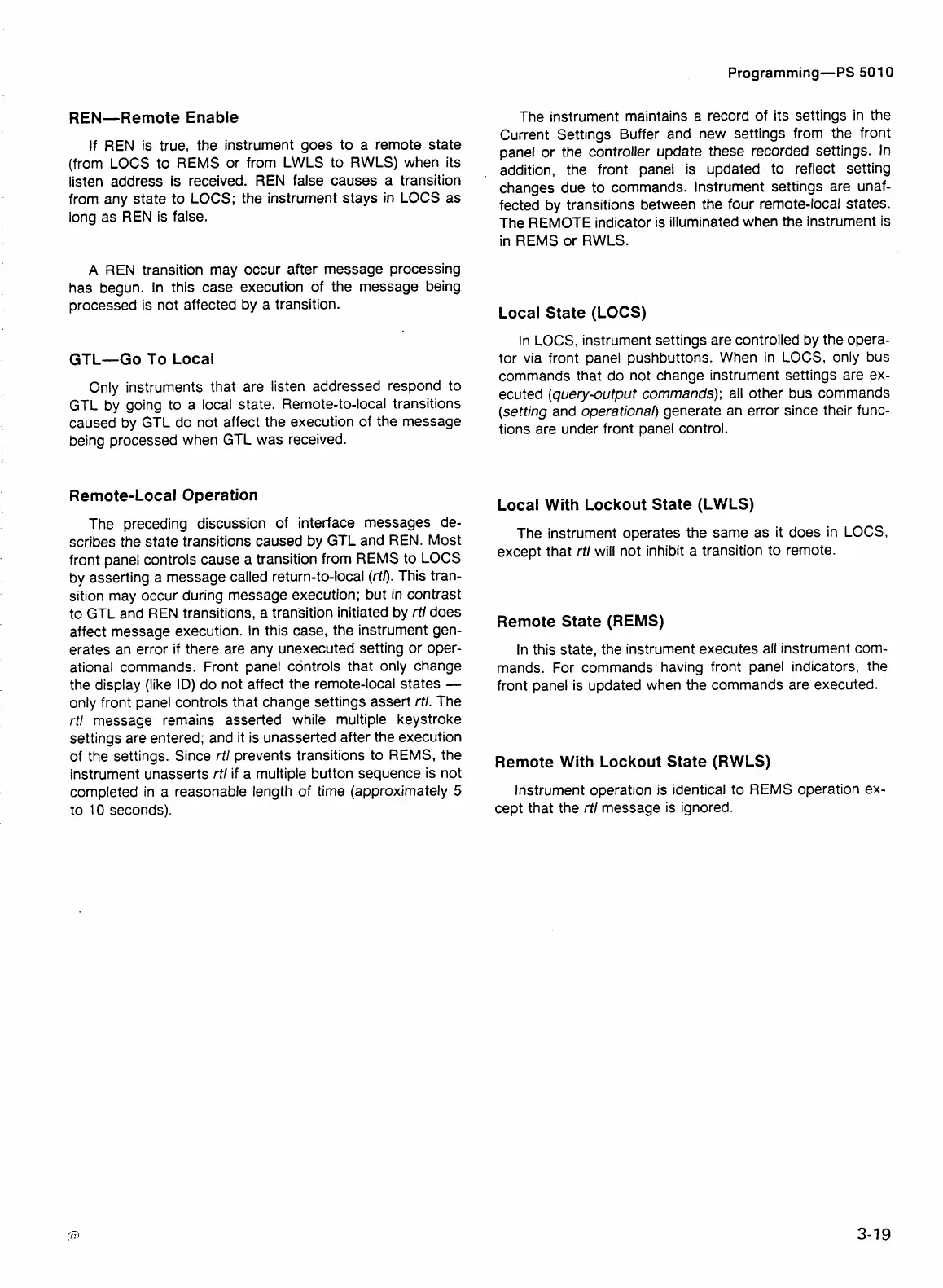REN-Remote Enable
If REN is true, the instrument goes to a remote state
(from LOCS to REMS or from LWLS to RWLS) when its
listen address is received. REN false causes a transition
'
from any state to LOCS; the instrument stays in LOCS as
long as REN is false.
A
REN transition may occur after message processing
has begun. In this case execution of the message being
processed is not affected by a transition.
GTL-Go To Local
Only instruments that are listen addressed respond to
GTL by going to a local state. Remote-to-local transitions
caused by GTL do not affect the execution of the message
being processed when GTL was received.
Remote-Local
Operation
The preceding discussion of interface messages de-
scribes the state transitions caused
by
GTL and REN. Most
front panel controls cause a transition from REMS to LOCS
by
asserting a message called return-to-local
(rtl).
This tran-
sition may occur during message execution; but in contrast
to GTL and REN transitions, a transition initiated by
rtl
does
affect message execution. In this case, the instrument gen-
erates an error if there are any unexecuted setting or oper-
ational commands. Front panel controls that only change
the display (like ID) do not affect the remote-local states
-
only front panel controls that change settings assert
rtl.
The
rtl
message remains asserted while multiple keystroke
settings are entered; and it is unasserted after the execution
of the settings. Since
rtl
prevents transitions to REMS, the
instrument unasserts
rtl
if a multiple button sequence is not
completed in a reasonable length of time (approximately
5
to
10
seconds).
The instrument maintains a record of its settings in the
Current Settings Buffer and new settings from the front
panel or the controller update these recorded settings. In
addition, the front panel is updated to reflect setting
changes due to commands. lnstrument settings are unaf-
fected by transitions between the four remote-local states.
The REMOTE indicator is illuminated when the instrument is
in REMS or RWLS.
Local State (LOCS)
In LOCS, instrument settings are controlled by the opera-
tor via front panel pushbuttons. When in LOCS, only bus
commands that do not change instrument settings are ex-
ecuted
(query-output
commands);
all other bus commands
(setting
and
operational)
generate an error since their func-
tions are under front panel control.
Local With Lockout State (LWLS)
The instrument operates the same as it does in LOCS,
except that
rtl
will not inhibit a transition to remote.
Remote State (REMS)
In this state, the instrument executes all instrument com-
mands. For commands having front panel indicators, the
front panel is updated when the commands are executed.
Remote With Lockout State (RWLS)
Instrument operation is identical to REMS operation ex-
cept that the
rtl
message is ignored.

